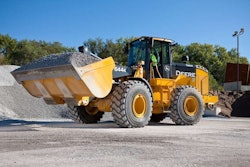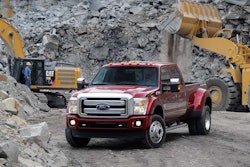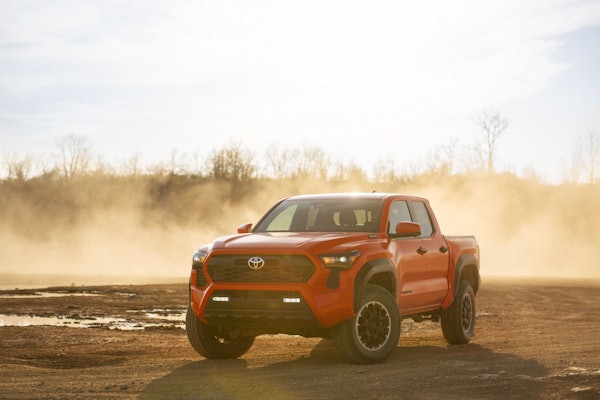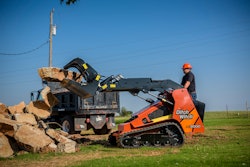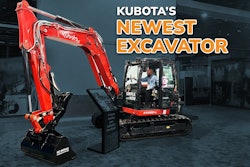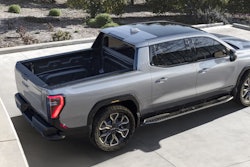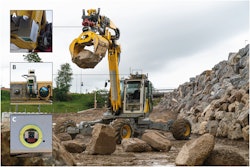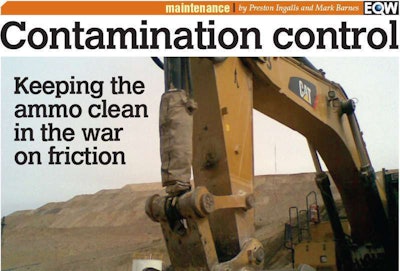
Machine owners are seeking ways to make their businesses more profitable. But you may be failing to recognize one of the most significant impacts on your equipment: contaminants in lubricating oils and hydraulic fluids.
The importance of cleanliness
In general industry, it’s widely recognized contaminants contribute either directly or indirectly to 60 to 70 percent of all failures of oil-wetted components. In earthmoving equipment, this number is even higher – perhaps as high as 85 to 90 percent. While inside a manufacturing plant equipment can be isolated from the elements, the same is obviously not true with construction equipment.
Contamination is anything in the oil that doesn’t belong there, including dirt, water, air, wear debris, unburnt fuel in engines and leaked coolant. While all of these contaminants cause real damage to equipment, we’ll focus on particles and moisture.
In a construction environment, particles and moisture are everywhere, and both can have a devastating effect. For example, failure to control particles in an engine can result in as much as a threefold to fourfold reduction in engine life. In hydraulic systems, water can readily cause valve and hydraulic pump failures. While most operators appreciate that dirt and water are “bad” for equipment, they often don’t understand the level and type of particle and moisture contamination that cause all the problems.
Dirt is obvious. But it’s not just the visible dirt that causes the problems. If we can see or feel dirt, it’s likely that the particles are in excess of 100 micron (4/1000 of an inch). The real troublemakers, however, are silt particles in the 1- to 5-micron size range. You can typically see a 40-micron dot on a white piece of paper, but a 3-micron dirt particle is far too small to see without a microscope.
In a study conducted by Cummins Engine, sub-10 micron-sized particles produced wear rates that were three to four times greater than those produced by 20-micron and larger particles.
Dirt has a similar impact on hydraulic systems. In many hydraulic pumps, clearances are also below 5 microns, while hydraulic valve clearances range anywhere from 1 micron to 10 microns, depending on valve type and operating pressures. In hydraulic systems, the impact of particle contamination is particularly insidious. It’s not just dirt particles that get in from the outside that cause all the problems. And studies have shown not only does dirt cause machine wear, but the particles generated through abrasive wear have a snowball effect inside the machine.
Avoiding water
Water is perhaps the second-most pervasive contaminant found in construction equipment. Water in oil can exist in three distinct forms: free, emulsified and dissolved. Free water refers to water that has separated from oil and settled to the bottom of the sump or tank. Emulsified water mixed with the fluid being supplied to moving parts, however, is the biggest problem. Water is not a good lubricant, but this issue goes beyond its poor lubricating properties. Water mixed with oil in an emulsion has poor film strength and is unable to support a dynamic load the way clean, dry oil can. Also, as water flows through lubrication boundaries, sudden pressure changes can result in microscopic implosion events, which are especially hazardous to pumps.
So how much is too much water? The answer is surprisingly little. As little as 500 ppm (about 6 fluid ounces of water in a 100-gallon tank) is sufficient to reduce pump life by a factor of two. The impact of water is even more pronounced in equipment used intermittently. At 250 ppm, any water present in a hydraulic system will be in the dissolved state and relatively innocuous at operating temperatures. However, when the machine is shut down and the oil cools down to ambient temperatures overnight, most water will come out of solution and become free or emulsified, resulting in corrosion and other water-related failure modes.
Contamination control is the key
Because of the impact of contaminants on equipment life, contamination control should be an important component of any preventive maintenance program. The first place to start is keeping particles and moisture out in the first place. Particles and moisture enter machines from two main areas: seals and air breathers. For engines, more than 95 percent of contamination comes from the air intake to the engine. For this reason, air-intake manifolds and air filters must be properly maintained. Even with proper care and maintenance, however, silt-sized particles will get through air filters, particularly when you understand that for every gallon of fuel burned, upwards of 10,000 gallons of air is pulled into an engine.
Once a particle enters an engine, the impact can be devastating. Even with the best full-flow oil filter, more than 1 billion 5 micron particles may still be present in the oil because most full-flow filters have little to no capture efficiency below 8 to 10 microns.
The key is to use supplemental bypass filtration. Bypass filtration involves installing a supplemental filter after the full-flow filter to direct 5 to 10 percent of the oil flow through a fine (1-3 um) depth media filter. These types of systems have been proven to improve fluid cleanliness in engines by as much as 32 to 64 times, resulting in a twofold to fourfold extension in engine rebuild life, in some instances in excess of 50,000 operating hour.
In hydraulics, particles and moisture enter the system through the air breather, fill port or rod/cylinder wiper seals. Again, these problems are easy to address. For rods/cylinders, even with a well-maintained dust/wiper seal, particles and moistures that alight on an extended rod surface can be drawn into the hydraulic fluid as the rod retracts back into the cylinder. One simple way to prevent this is to use rod boots, expandable bellows that are attached to the outside of the cylinder and expand and contract as the rod moves out and in While older versions of rod boots didn’t stand up to the aggressive nature of construction, modern boots fabricated from Kevlar and other strong materials are far better suited and a great solution.
Desiccating breathers
Equally important are the air breathers. When a rod extends out of the cylinder, the volume of hydraulic fluid needed to extend the arm needs to be replaced by air that enters through the tank breathers. Most tank breathers do a poor job of preventing silt (1 to 10 micron) sized particles from entering the systems and do absolutely nothing to prevent water ingress. To adequately address both particle and moisture ingress through the breather, air vents/fill ports should be upgraded to high efficiency desiccating breathers that remove moisture using silica gel and have a 1 micron particle removal element built in.
Dirty business
However, even with proper breathers and the use of rod boots, hydraulic systems can become contaminated, and while full-flow filters in hydraulic systems can be used to control particle contamination, oftentimes they are not enough. When optimum cleanliness levels cannot be maintained in hydraulics, bypass filtration systems similar can be deployed to keep contaminants down to safe levels.
Construction is a dirty business. Particles and moisture are everywhere, itching for the opportunity to enter the oil and cause premature failure. But with a few simple remedies, particles and moisture can be controlled, resulting in prolonged component life, reduced maintenance costs and increased equipment availability.
Editor’s Note: Preston Ingalls is president/CEO of TBR Strategies, a Raleigh, North Carolina-based maintenance and reliability consulting firm, tbr-strategies.com. Mark Barnes is vice president of reliability services for Des-Case, which specializes in fluid management and contamination control solutions, descase.com.




